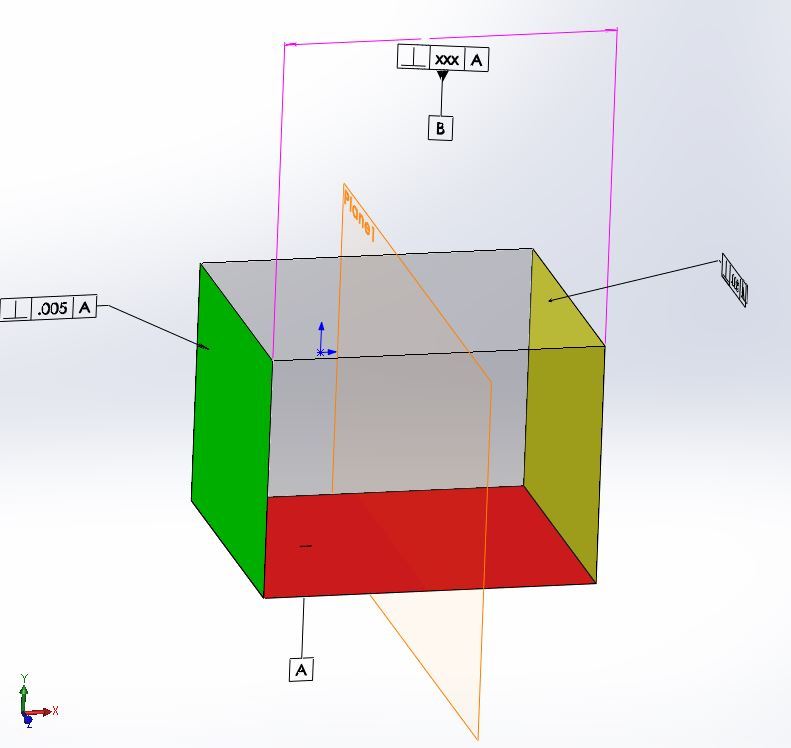gabimo
Mechanical
- May 2, 2013
- 124
Will the orientation of the side faces of a cube to the bottom feature control the orientation of the middle plane to the bottom feature
ASME Y14.5-2009
Picture a parallelepiped / cube (regular feature of size):
If two side faces (both) are perpendicular to the bottom face within some tolerance (let’s say .005 and .008 respectively---from the raw material), the width (the distance between them) is controlled by a size tolerance (let’s say .012—also from raw material), then the question is what is maximum perpendicularity error allowed between the middle plane and the bottom surface. The part has datum feature A = bottom face and datum feature B, secondary = the .012 width, oriented within some amount (the one I am trying to get the maximum value) to primary datum feature A
If picture is needed, please let me know.
ASME Y14.5-2009
Picture a parallelepiped / cube (regular feature of size):
If two side faces (both) are perpendicular to the bottom face within some tolerance (let’s say .005 and .008 respectively---from the raw material), the width (the distance between them) is controlled by a size tolerance (let’s say .012—also from raw material), then the question is what is maximum perpendicularity error allowed between the middle plane and the bottom surface. The part has datum feature A = bottom face and datum feature B, secondary = the .012 width, oriented within some amount (the one I am trying to get the maximum value) to primary datum feature A
If picture is needed, please let me know.


![[dazed] [dazed] [dazed]](/data/assets/smilies/dazed.gif)